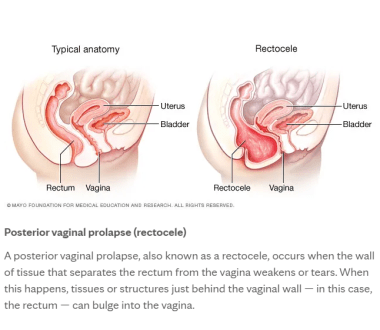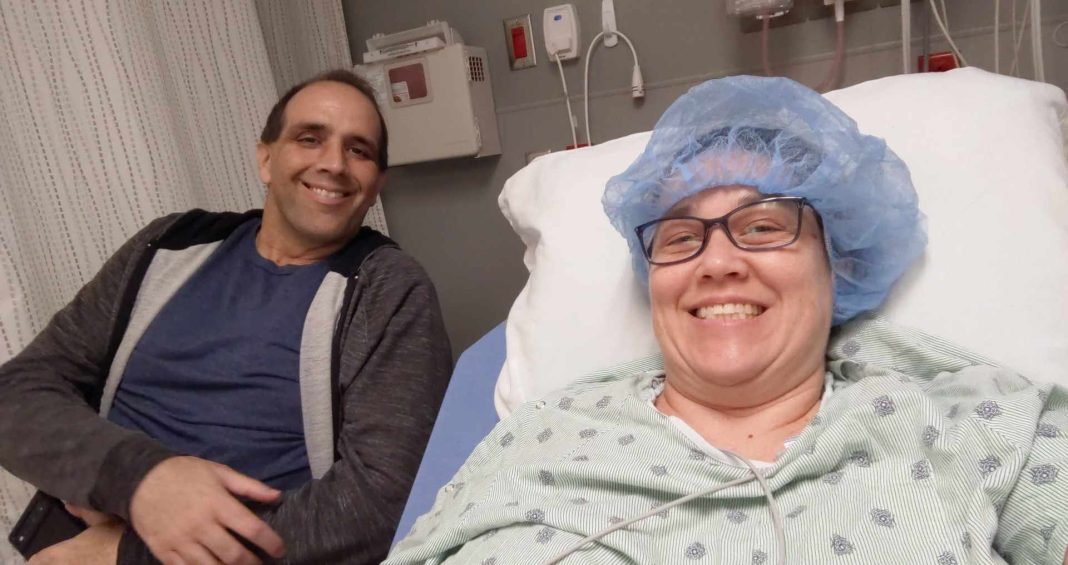Being a mom comes with many benefits, rewards, and struggles that aren’t always discussed. Today, I will tell you something personal that many can relate to, or that may raise awareness about prolapse.
According to the NHS, a “pelvic organ prolapse is when 1 or more of the organs in the pelvis slip down from their normal position and bulge into the vagina. It can be the womb (uterus), bowel, bladder or top of the vagina.” During pregnancy and childbirth, the baby pushes on our organs and pelvic floor. What no one seems to discuss are pelvic floor exercises to strengthen these muscles. I learned about it a few years ago at my first Bloom event with Orlando Mom. Unfortunately for me, my symptoms were a bit further along.

For me, my prolapse was that my colon was bulging into my vaginal canal and starting to bulge out of my body (posterior vaginal wall prolapse). I could feel it when I wiped after urinating. TMI, I had to push on it to help excrete my fecal matter. I had been living like this for years (nearly twelve years). When I discussed this with my ob-gyn, she said she’d never heard of it. Maybe I didn’t explain it well enough for her to say, oh yes, that’s a prolapse. It wasn’t until this past March when I somehow got COVID, and my coughing was so deep and harsh that I started peeing myself. I went to my primary doctor to get a referral for a urogynecologist. I was hoping to learn more about pelvic floor exercises.
Understanding what I had
The first appointment was a vaginal exam in which she noticed my prolapse and discussed with me what it was and had a printout of my measurements to show me what my insides were doing. Everything had shifted and slipped after having three large babies (two them almost 10 lbs).
We discussed pelvic floor exercises, different options for my incontinence (peeing when coughing or sneezing), and options regarding my prolapse. Since my incontinence was recent, I decided to opt for a bladder stress test to see how bad it was and to determine which was the best option to correct it. I scheduled the exam and was back in the office three weeks later. Wow, was that an interesting test!
They asked me to arrive with a full bladder and escorted me to my exam room with the table set up for a normal vaginal exam, but this time with a scale and a bucket. They told me to relieve myself in the bucket! Afterward, she inserted a catheter to measure the urine that was still left. There was some, but not a lot, which made me feel better — until she then explained she had to insert another type of catheter into my rectum that had a sensor on it to detect and measure bladder pulses.
Then, I spent the next half hour getting my bladder filled with fluid. There was a chart on the wall for reference, and I had to tell the technician at each of the four stages when I felt the urge to pee. They are: I think I need to pee. I need to pee, but I’ve got time. I need to pee and look for a bathroom soon, and I need to pee now! At each stage, the technician stopped the fluid, noted the amount pumped in, asked me to cough softly and deeply, and noted the amount of leaking at each stage. When this was all completed, I was able to get dressed and make an appointment for a follow-up, which was a tele-med appointment.
This was my first experience with a tele-med video call. It was so great not having to carve out a three-hour chunk of my day to drive downtown Orlando for what was accomplished in a 15-minute chat. The results showed my leaking was more than I thought it was. I passed the first two levels but leaked a smidge on the soft cough and more on the hard cough in level three, and a lot in both coughs of level four. Actually, I urinated a lot during the hard cough with nearly no control to stop. But come on, if your bladder is so full that your eyes are floating, I would expect anyone to leak a little when coughing or sneezing. There was also mention of my bladder spasms, which is why I recently never felt I could have a full release and had to sit and wait to finish.
The in between
Between visits, I contemplated all my thoughts and chatted with my husband and my bestie (a nurse). After hearing my results on my incontinence and knowing I was already in need of, as I was calling it, a tummy tuck in my butt, I decided to get the sling. It’s best to get everything fixed up at the same time while I’m still young enough to heal quicker instead of going through similar procedures when I’m older.
I was a little surprised at how quickly I was able to schedule the surgery— I had less than two weeks to mentally prepare that this was happening soon. I cried a few times in the days leading up to it, and I cried in pre-op. I was so nervous. Sure, I had birthed three kids naturally, but this was different. There was no adrenaline coursing to keep my mind on the end result. Not to mention I was a bit bummed there were two men in the room during my procedure; this was a private moment of my private parts, and though I’m OK with female staff, I’ve never had a male nurse involved in anything I’ve done.
Surgery day
Pre-op was boring, but my husband was there to hang out with me for an hour and a half. I was hungry since I couldn’t eat after midnight (like a Gremlin) and stopped sipping water by 7 am. My doctor visited me at 10:30 am to discuss what would happen and asked why I was nervous. Her conversation was sweet, sympathetic, and informative but short. An hour later, they started my “happy juice.” As they rolled me into the operating room, I remember seeing the setup and thought, oh wow, and then I was out. No fluttering eyes or sleepy head nods, just out.
Supposedly, it was a routine 30-minute operation. However, I didn’t start waking up until after 2:40 pm. My husband was able to come back at 3:00 pm. Eventually, the nurse was able to remove my catheter and get me up to use the toilet. An older nurse explained that the first time urinating would be like a bloody Mary, then pink lemonade, then slowly back to normal. She was not wrong. I am thankful I was able to pee twice before leaving. Otherwise, I would have been sent home with a catheter. That same nurse also told my husband that he was in total control of me and not to let me do anything. He tried to tell her I was the boss, but she gave him that look and said, not right now, you are.
Remembering the pre-op conversation, I was happy everything was going well. My doctor mentioned that there’s a one percent chance that my prolapse could come back, that my bladder would drop, or that I would have to go through this any time soon. The sling itself is supposed to last 10-20 years, at which time I can make a choice about what to do if I start having incontinence issues again. For now, I was sent home with medication and told to rest.
Post surgery
These past few days that it’s taken me to write my story, I have been blessed by many messages of encouragement and similar experiences. I’ve also received food, flowers, a gift bag, visitors, a friend who took the boys to swim, and a friend who took my boys out for a whole day to the library and bowling. My village is amazing, and I’m so grateful for them all. The emotional support of my physical and mental well-being has filled me with so much love. I only hope this story brings someone a light to not feel alone in an unspoken world of women’s health.
UPDATE: It’s been five days. Yesterday was my first bowel movement. I was scared, but the stool softener pills helped. However, I am still bleeding from the stitches in my vagina. I was told 5-10 days of this. Yesterday was also my first shower. I can still feel a firm bulge where the prolapse was, but I am also so happy that my hemorrhoids seem to fit in my rectum again. Besides the need to lie down and rest all day, I’m starting to regain the desire to do stuff again. It’s a good thing I crochet.






















